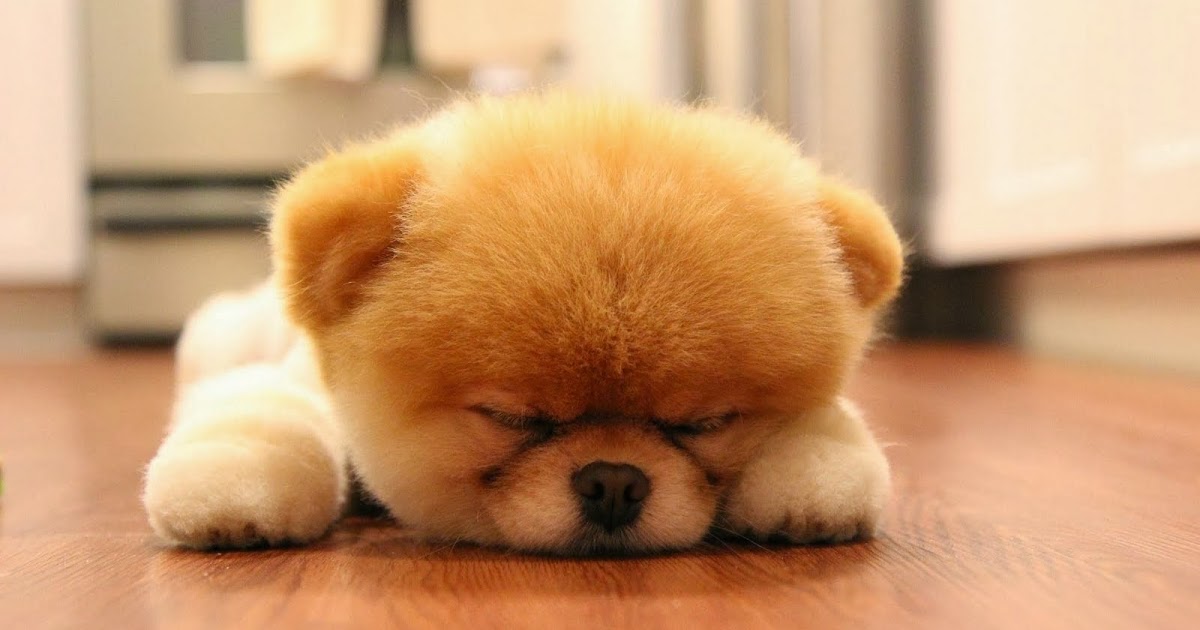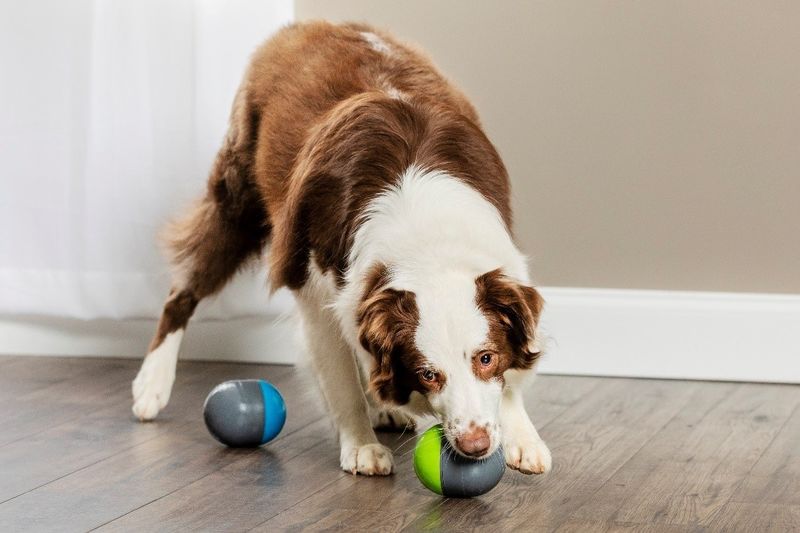
Service dogs are no pets, but dogs that are specially trained to assist individuals with different kinds of disabilities by performing specific tasks for their benefit. Service dogs can be considered “medical equipment” and they must be granted access to the places where their handler goes. For many handlers, thinking about their dogs as “equipment” may seem a bit confusing, especially if they have raised a puppy and decided to train him/her as a service dog at an adult age. Questions like “Do the games have to stop?”, “May I buy my dog toys?”, “May we still have fun together?” are likely to arise.
You will be glad to know that service dogs need to have quality playtime same as pets that will help them spend an excessive amount of energy and keep them in a good shape both mentally and physically.
As the playtime along with the relax time is very important to service dogs, we will let you know how to improve the playtime and what kinds of toys are considered the best for service dogs.
Some tasks like pulling a wheelchair, opening heavy doors, or supporting their handler for better balance may be really challenging and require a strong physique. Hence, regular exercises and toys that will help the service dog stay physically fit should be taken into consideration by handlers with physical disabilities. Chase toys are a great option in this case.
Chase Toys
Chase games are some favorite games for many dogs, especially for the representatives of the Sporting, Hound, Working, and Herding dog groups, i.e.: the Retriever, Spaniel, Pointer, Setter; the Greyhound, Whippet, Ibizan Hound; the Doberman Pinscher, Siberian Husky, Great Dane; the Belgian Malinois, German Shepherd, Australian Cattle Dog, Australian Shepherd, Bearded Collie...etc. When using chase toys you give your dog the opportunity to exercise without requiring too much effort on your side. Types of chase toys that your dog may benefit from are:
balls, frisbees, automatic ball launchers, flirt poles, squeaky latex standing stick toys...etc.
Basically, you can use different kinds of objects/toys and throw them. Some dogs prefer certain objects at home and enjoy chasing them. If your canine loves playing this game, you can train him/her to bring the object back. “Fetch” and “Retrieve” are some of the essential tasks that service dogs can be trained to perform, as bringing medication or a phone to call 911 to the handler can be life-saving.
However, you should always consider your dog as an individual and pay attention to his/her particular interests. Some dogs, regardless of the breed, may not enjoy chasing objects.
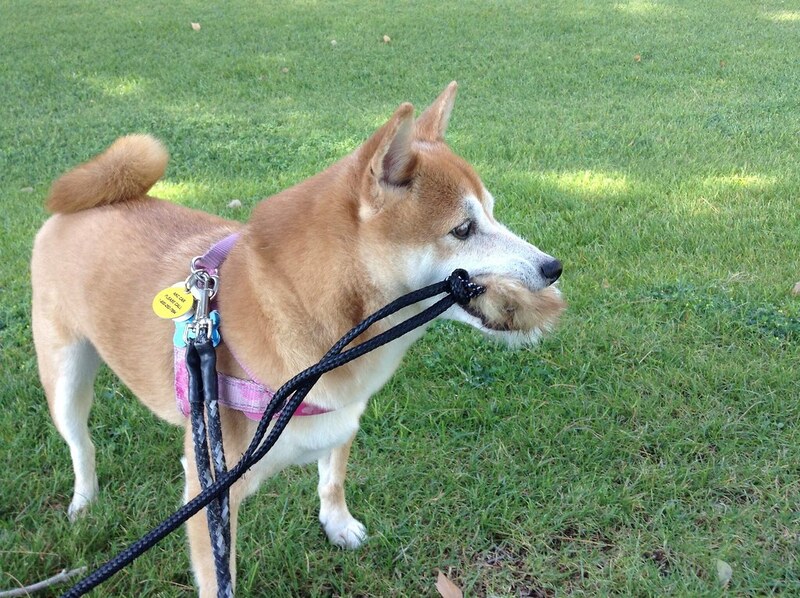
Tug Toys/Obedience Toys
Using tug toys may have a lot of benefits for both handlers and dogs. Dogs can strengthen their physique during playtime while handlers can train them to control their natural impulse and practice obedience. Playing with tug toys will help your dog develop his/her body structure and will improve their abilities. Being obedient, able to control the natural impulse, and mentally sharp, are essential characteristics for dogs to be good service dogs.
Types of tug toys are:
ropes/balls tied on ropes, rubber toys, and other sturdy and long and robust toys.
We would recommend that you play this game with your canine carefully and not let it become too wild and get out of control.
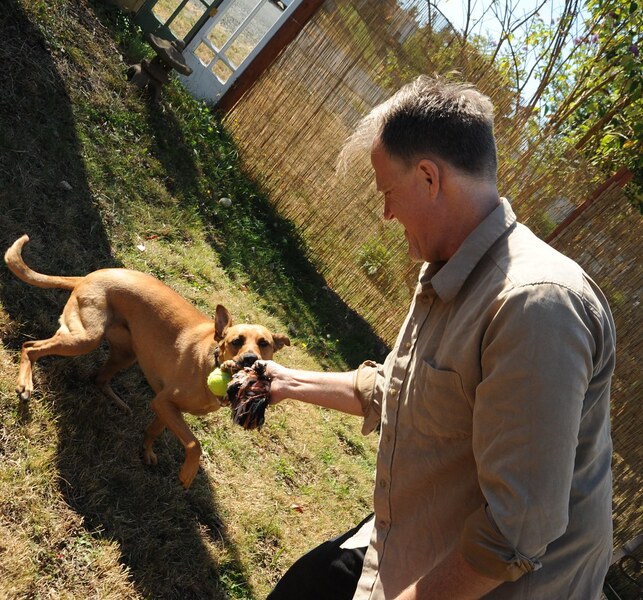
Puzzle Toys
These toys are designed to take care of the mental state of your dog. Dogs are smart creatures, but maintaining their intelligence is very important. Moreover, providing your dog with different puzzles will keep them busy, and you will be able to do your own activities at home- do tasks or take some time for your hobby.
Usually, puzzle toys have slots or places where you can put treats. Canines will need to work to get the treat out of the toy. They will enjoy both the “game part” that challenges them and the treatment itself as a reward for their work after they manage to get it. These toys will help your service dog develop the ability to solve problems and be more clever and innovative during the task performance. There is a variety of puzzle/food toys on the market, and you can choose among different brands.
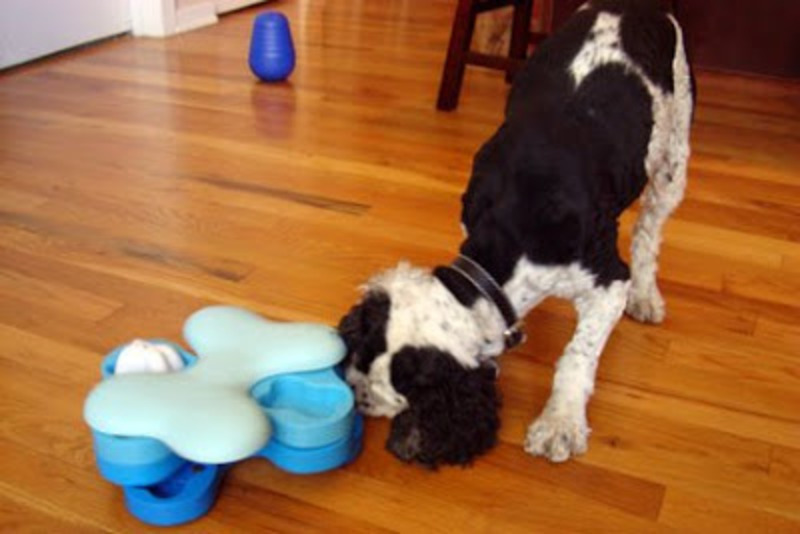
Chew Toys
Most dog owners have experienced difficulties with their little furry friend chewing everything at home, especially during the puppy stage. Providing your dog with chew toys may spare you troubles, save your furniture and help your canine not cause damage to their teeth while chewing random objects.
When choosing chew toys for your paw friend you should consider his/her size and mouth width. Usually, chew toys need to be longer than the width of your canine’s mouth. If you have a dog of a larger breed you may need to find something more challenging that will awake his/her interest and keep it alive during the day. Logically if your canine is representative of a smaller and more gentle breed, you need to be careful and choose a softer toy. Furthermore, you may want to take into consideration your dog’s preferences and style. This means that some dogs prefer bully sticks, beams, sticks made of cheese, and different kinds of edible “toys” in general. Other dogs may prefer to chew toys made of natural materials, that are of course dog safe like rubber and wood. Plastic toys are also a very common option. Finding the right toy for your dog will keep him/her busy for some time throughout the day and help him/her relax. Chewing can provide good relaxation for dogs, especially for service dogs who need to stay focused on their handler all day long and need to relieve from the stress.
Finding suitable toys for their dogs/service dogs may be a little neglected by some handlers/owners or considered “spoiling” their dogs and hence unnecessary. Actually, providing our furry friends with toys that are most suitable for them, based on their size, breed and temperament will have many advantages for them as well as for us handlers/owners. Our paw friends will stay in good physical and mental shape and develop many abilities that will be extremely helpful for the handlers on a daily basis. While engaged in the games, dogs will let their handlers enjoy their own time.



